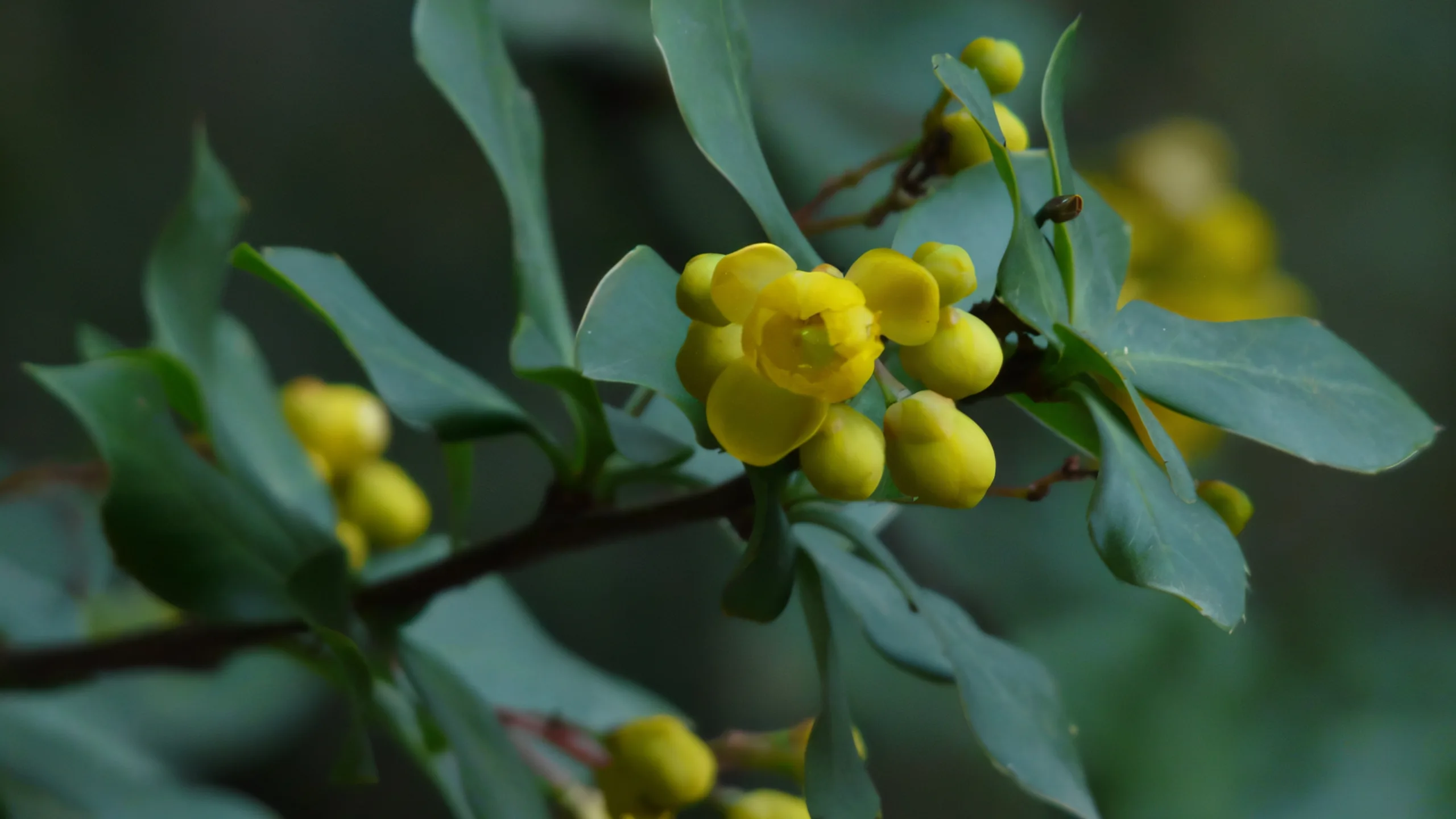
Daruharidra (Berberis aristata) is a small to medium-sized shrub commonly found in the Himalayan region and parts of India. It is recognized for its medicinal properties and is widely used in traditional systems of medicine, particularly in Ayurveda. The plant is known for its yellowish bark, which is rich in berberine, a compound with significant therapeutic effects.
Daruharidra Scientific Names
- Kingdom: Plantae
- Phylum: Angiosperms
- Class: Eudicots
- Order: Ranunculales
- Family: Berberidaceae
- Genus: Berberis
- Species: Berberis aristata
Daruharidra Common Names
- English: Indian Barberry, Tree Turmeric
- Sanskrit: Daruharidra, Daru, Haridra
- Hindi: Daruharidra, Chitra, Chitrak
- Tamil: Vaivarasa, Daruharidra
- Telugu: Daruharidra
- Bengali: Daruharidra
- Marathi: Daruharidra
Daruharidra Uses
- Liver Health -
Hepatoprotective: Daruhaldar is renowned for its liver-protective properties. It aids in detoxifying the liver, improving liver function, and treating conditions like jaundice and liver infections.
- Anti-inflammatory - The plant exhibits significant anti-inflammatory effects and is used to treat conditions such as arthritis and various inflammatory diseases.
- Skin Disorders - Antibacterial and Antifungal: Daruhaldar’s bark is used in treating skin diseases, including eczema, psoriasis, and ringworm infections. It helps in reducing skin irritation and inflammation.
- Digestive Health - Daruhaldar is used to treat digestive disorders, including indigestion and constipation. It is also beneficial in treating gastric ulcers and improving appetite.
- Antimicrobial Properties - The plant is known for its antimicrobial properties, making it effective against various bacterial and fungal infections.
- Blood Purification - Used traditionally as a blood purifier, it helps in improving skin tone and managing conditions related to blood toxicity.
Phytochemical Constituents
Daruhaldar contains a variety of active compounds, including:
- Alkaloids: Berberine, Palmatine, Columbamine
- Flavonoids: Quercetin, Kaempferol
- Phenolic Compounds: Tannins, Anthraquinones
- Other Compounds: Berberastine, Oxyacanthine
References
Ayurvedic Pharmacopoeia of India (API), Government of India.
Sharangdhar Samhita, Chapter on Hepatoprotective Herbs.
Chopra, R.N., Nayar, S.L., & Chopra, I.C. (1956). Glossary of Indian Medicinal Plants. CSIR, New Delhi.
Verma, S., & Gupta, R. (2012). "Berberis aristata: A comprehensive review of its medicinal properties." International Journal of Pharmaceutical Sciences and Research, 3(11), 4245-4250.
Kamatou, G.P.P., & Viljoen, A.M. (2015). "Phytochemistry and pharmacology of Berberis aristata." Journal of Ethnopharmacology, 163, 7-15.
Pharmacopoeia of India, Ministry of Health & Family Welfare, Government of India.





 My Account
My Account